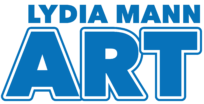
Project brief
Application task flow and form design.
Strategy
As a collaborative annual venture, the Worldstudio AIGA Scholarships program does great work awarding financial assistance to minority and economically disadvantaged students. Unfortunately, the application and judging processes were confusing and cumbersome, drawing time and resources away from other programs.
In addition, the audience—young aspiring designers graduating from high-school—were too frequently confounded to the point of failure during the application process.
Research
Recurring problems and inefficiencies in the 2007-2008 cycle included:
- Too many resources were allocated – well beyond budget – including phone and technical support plus temporary clerical staff after the deadline.
- The split system was confusing, with only part online.
- Tension and ill-will characterized communications from frustrated applicants, parents and faculty advisors.
- The rate of incomplete applications, requiring staff intervention and follow-up, was unacceptably high.
- The jurors’ were required to intervene manually, an unpleasant process which also contributed to a potentially inexact or unfair judging process.
Goals:
- Reduce allocation of staff time and resources.
- Increase good will between organization and applicants.
- Reduce effort and stress for all involved.
- Make interface consistant, seamless and easy to use.
- Eliminate submission of incomplete applications.
- Establish more pleasant, transparent judging experience.
- Increase the quality and number of applications.
Process and methodology:
Interviews with staff and technical teams helped identify sticking points. I was able to hear firsthand which processes were causing them grief. It became clear that the system was burdened by historic assumptions and methods of data- and portfolio-collection.
The first step was to reconsider some of these assumptions: that school officials wouldn’t use email and that students and their parents couldn’t or wouldn’t understand online directions.
At that point we began to:
- Simplify and make consistent the online and printed written instructions.
- Take into account that some terms and concepts would be unfamiliar to the audience, thus including colloquial labels and visual clues, where appropriate.
- Bring most of the system online. This reduced numerous complex instructions and potential for confusion; we also provided offline fallback options for those with limited internet access or comfort.
- Provide personalized printable mailing labels to associate applicant’s ID with physical submissions.
- Attach applicant’s ID to email communications.
- Linearize and restrict passage through application, most importantly, permitting submission only of complete applications. The submit button only appears following validation that all required elements are completed.
- Produce automated online gallery for jurors’ reference, reducing risk of misidentification.
- Improve the jurors’ administrative project manager process to address requests for reporting and comparison.
Results:
Phone support requests diminished markedly over the course of two application cycles. No staff time was required for application processing, hours of temp workers were drastically reduced and judging went without a hitch.
The clear and attractive online forms and backend features became a model for other competition and award systems for the organization.
